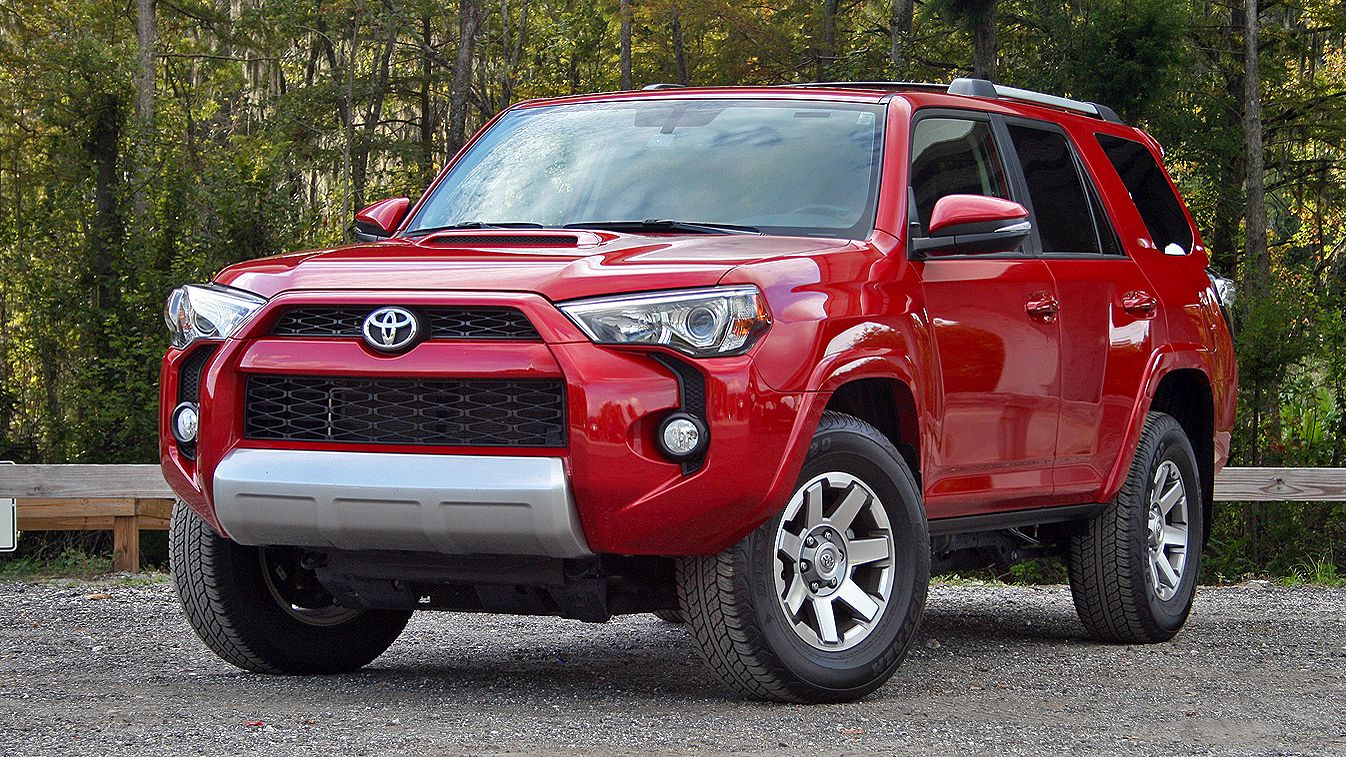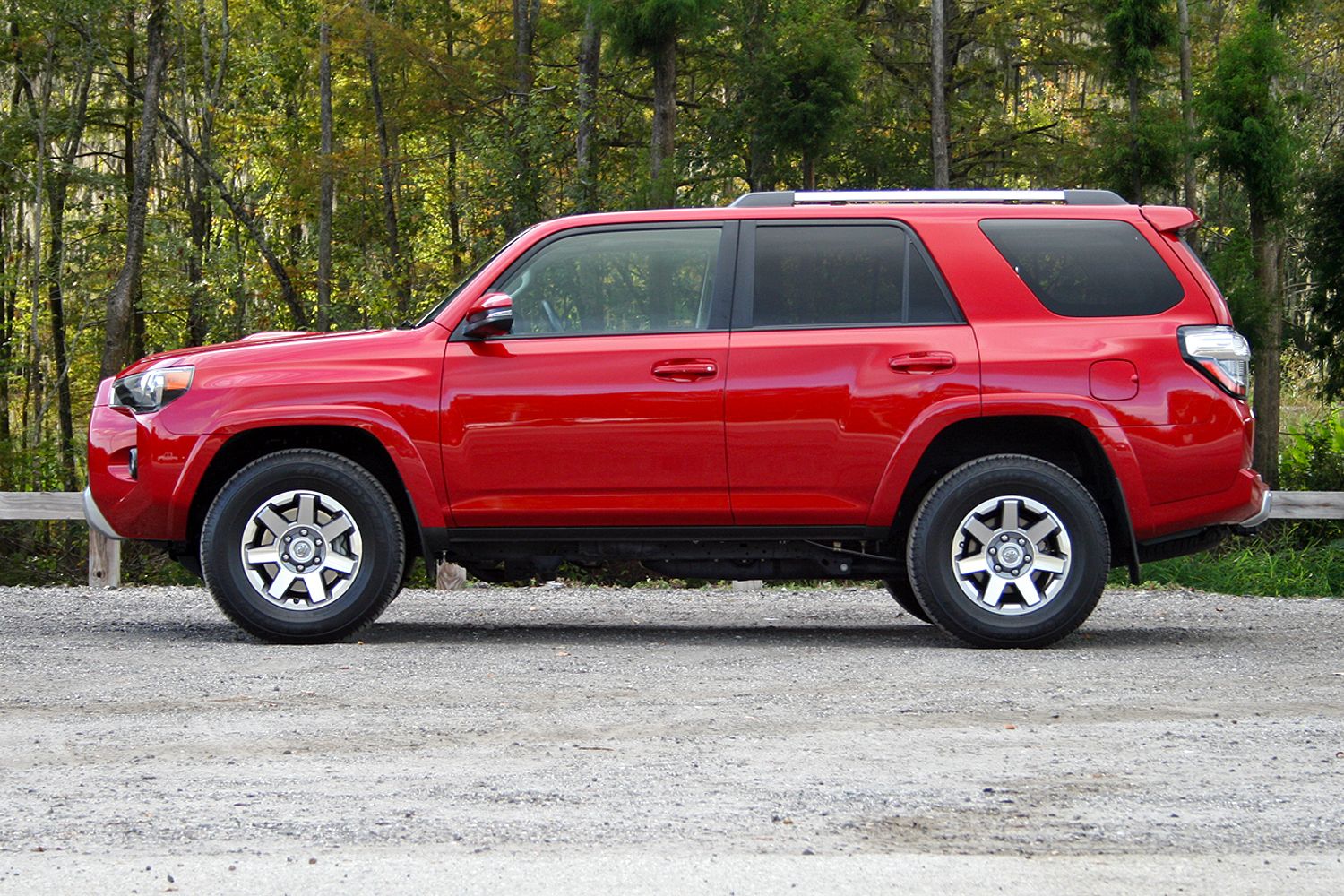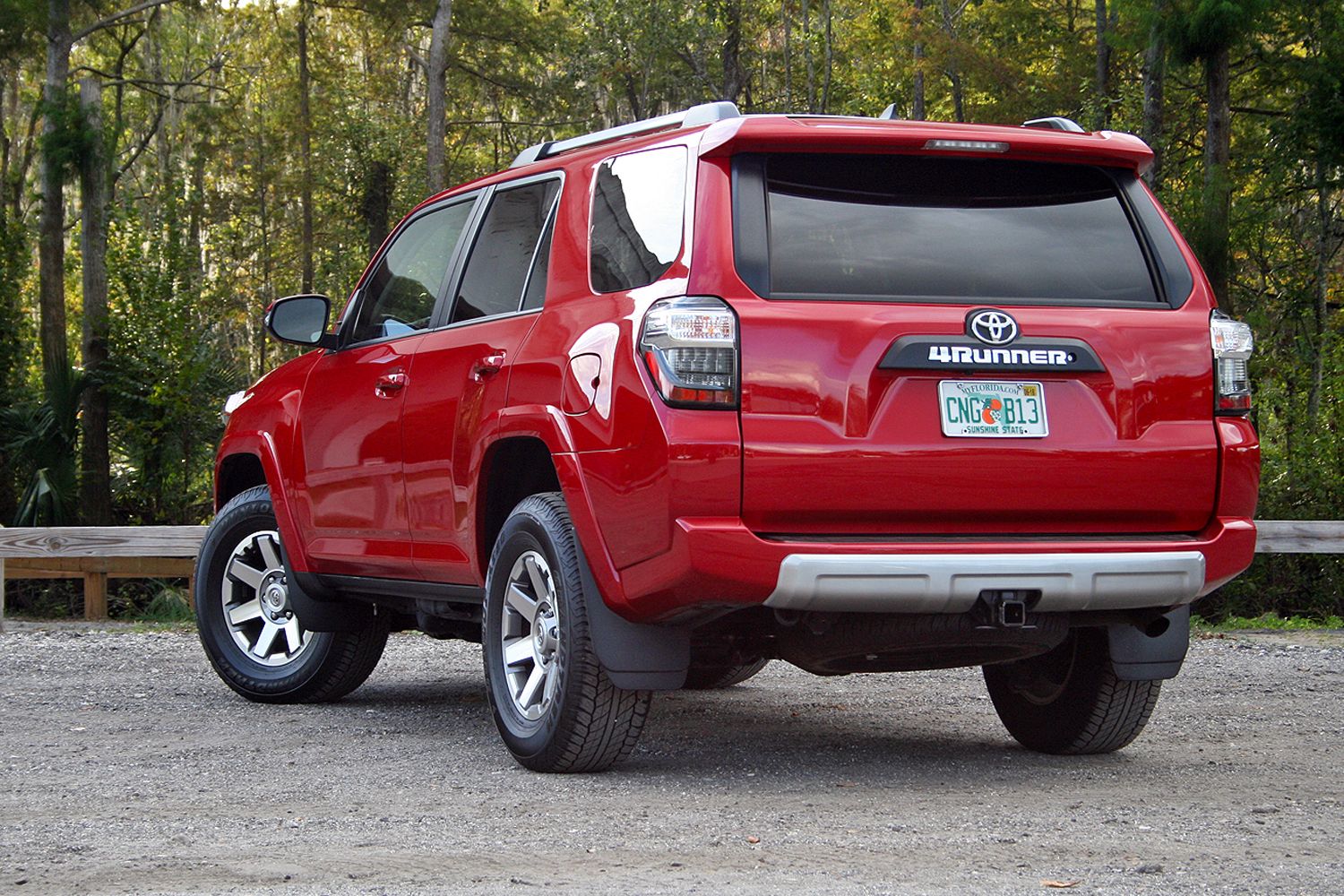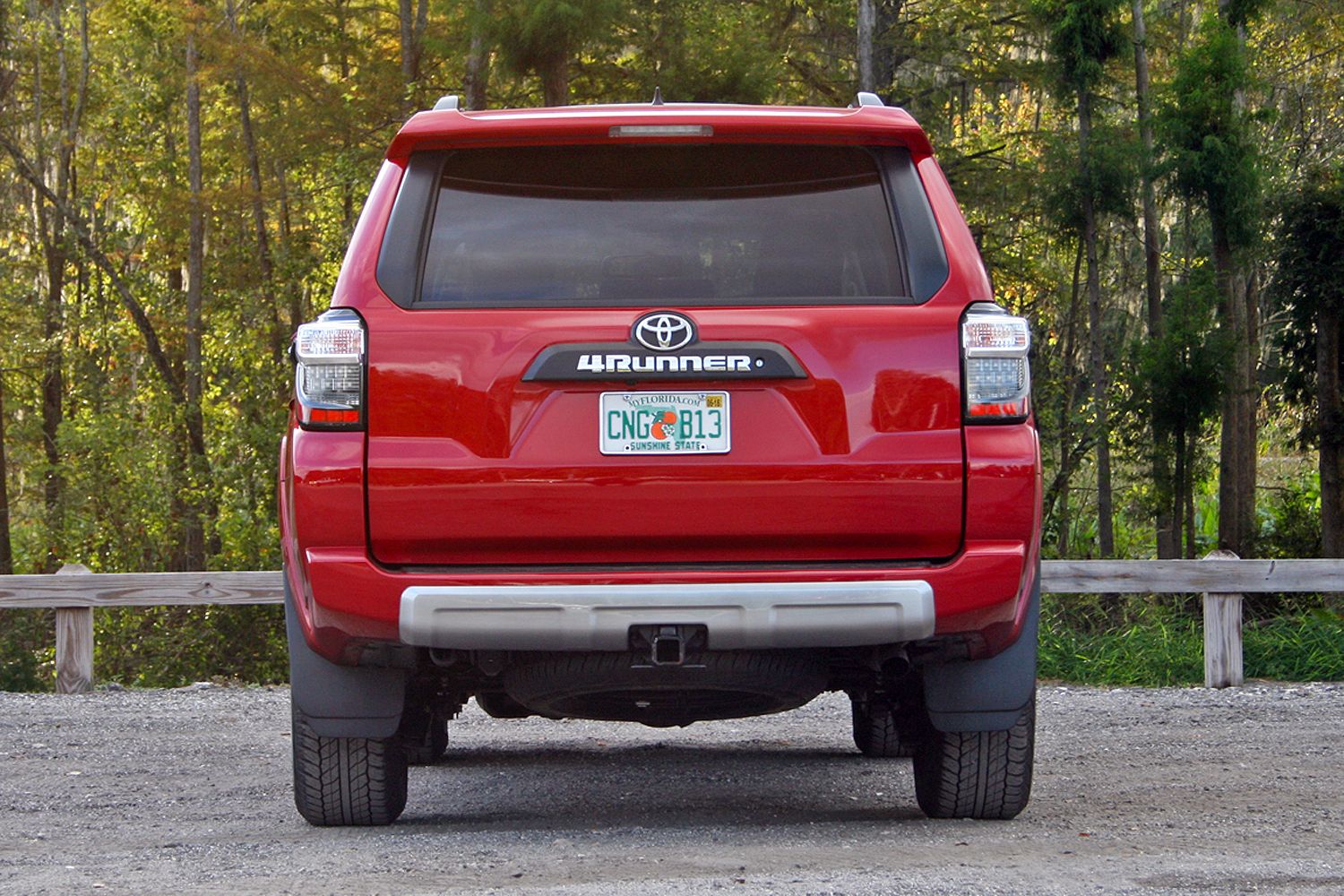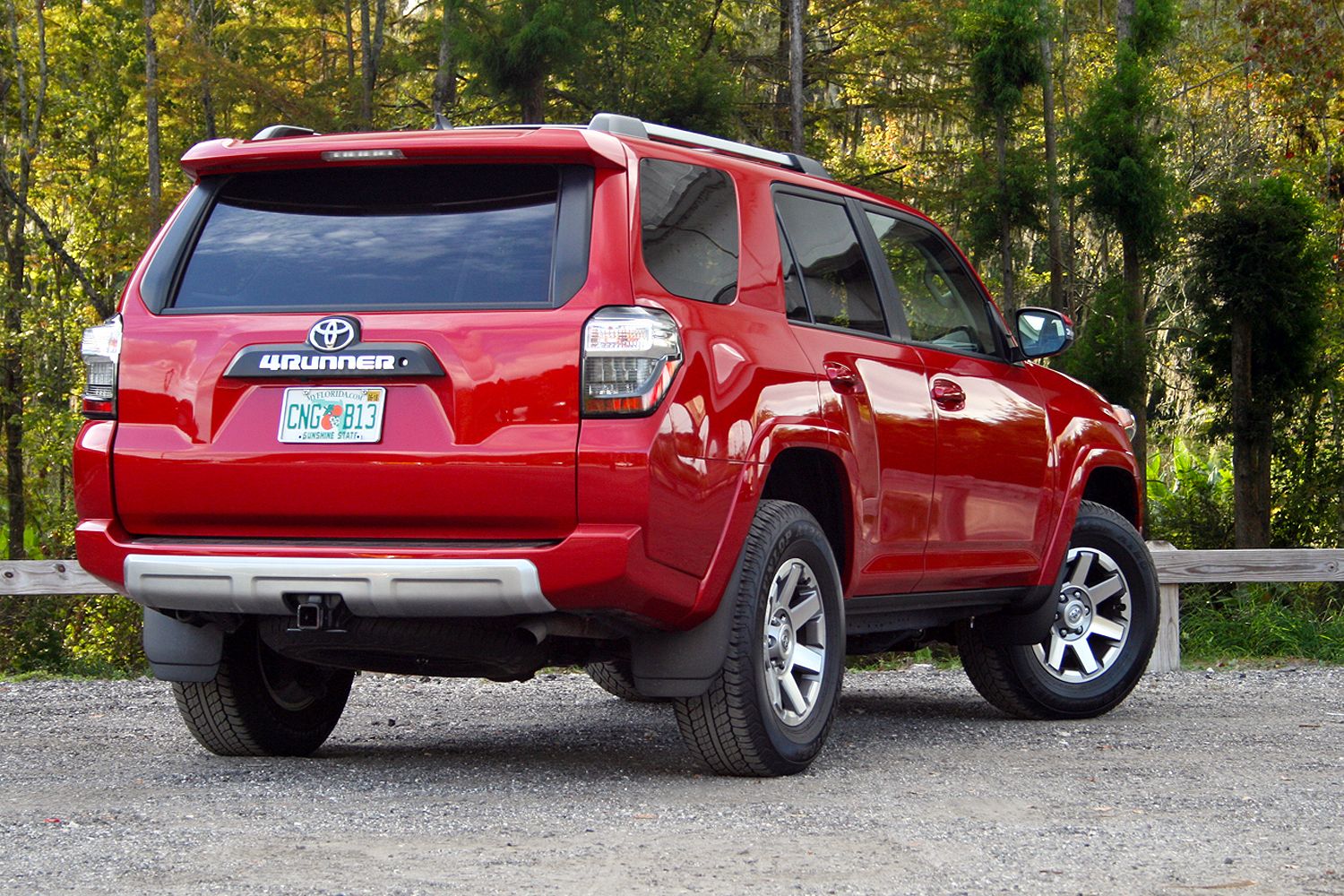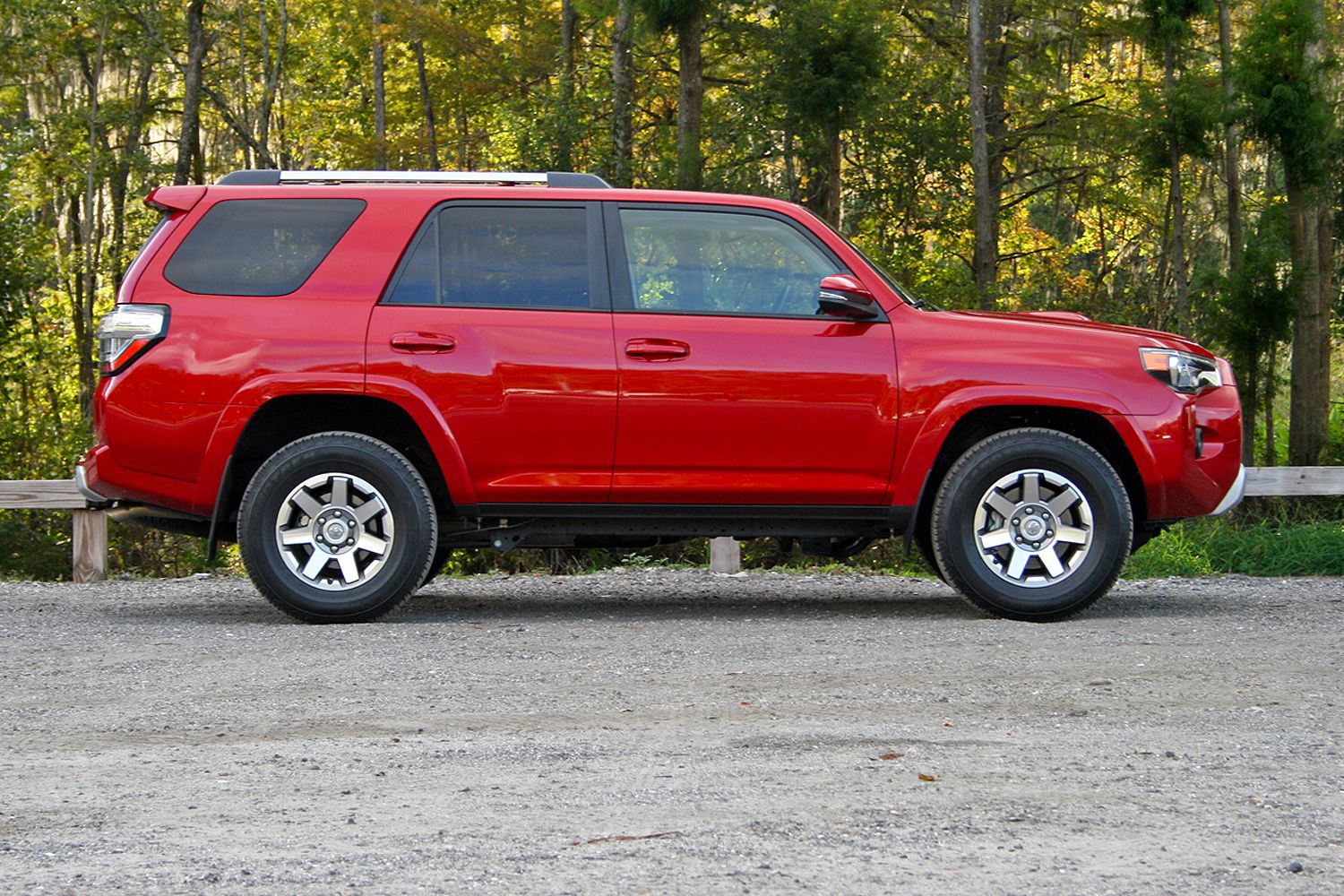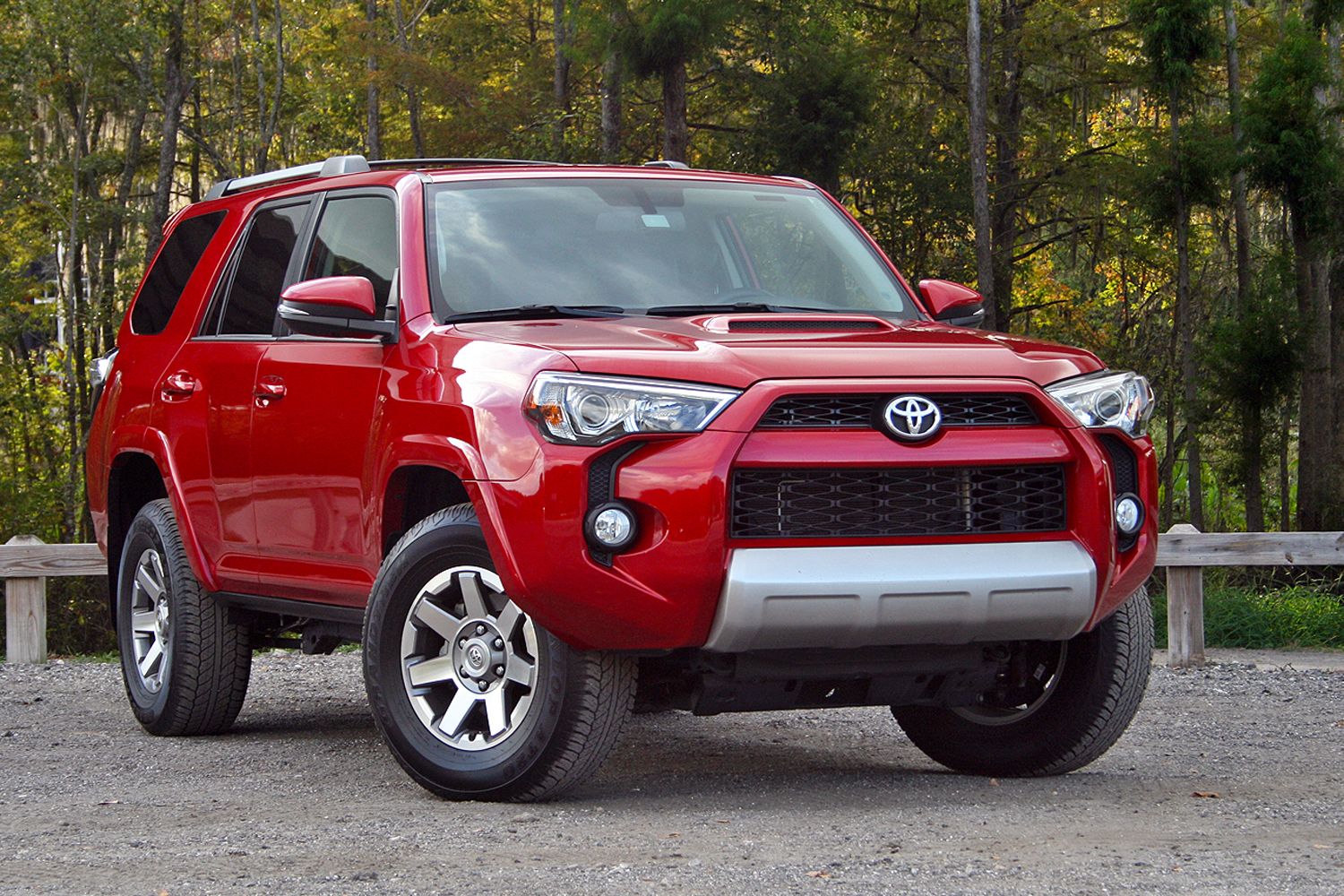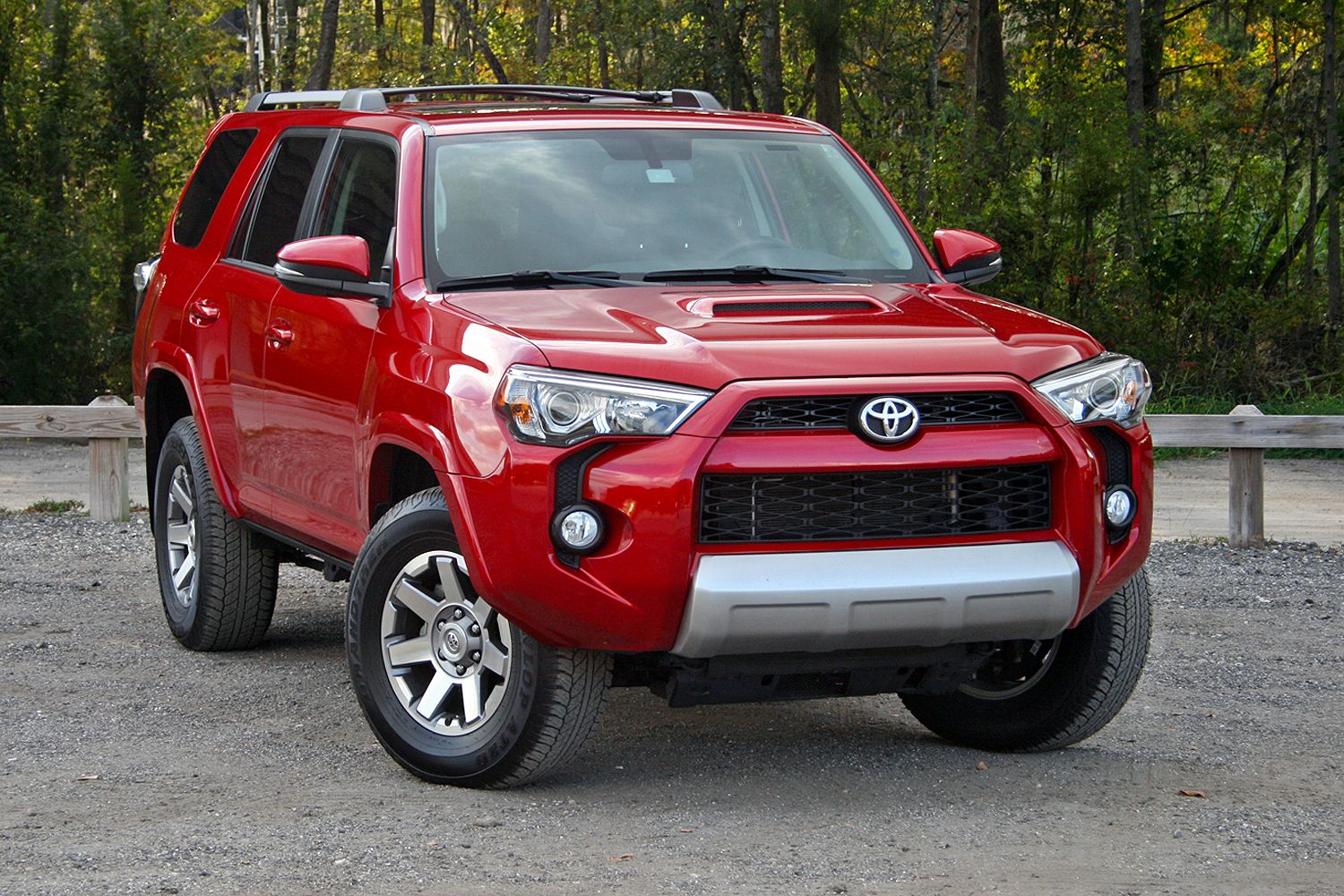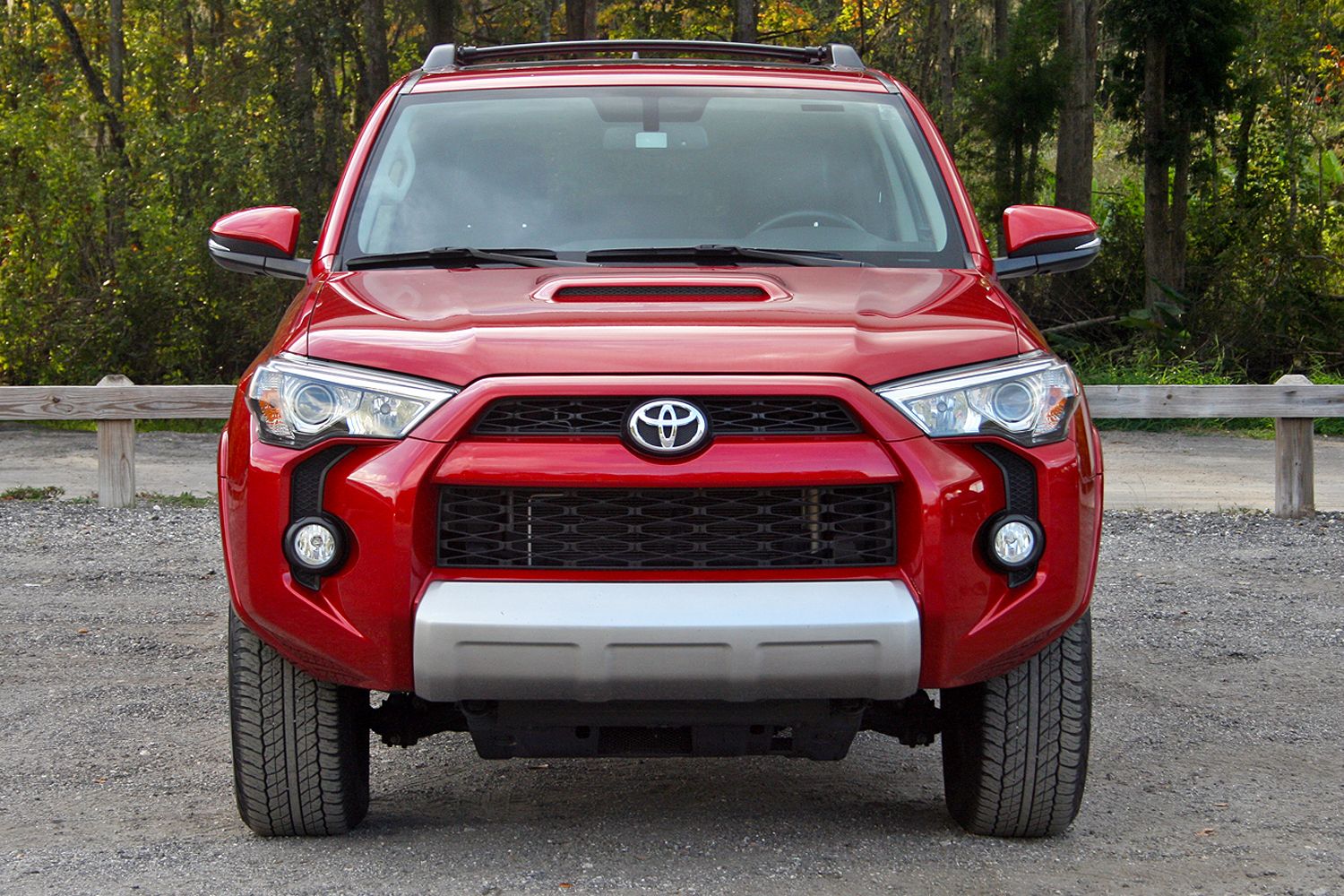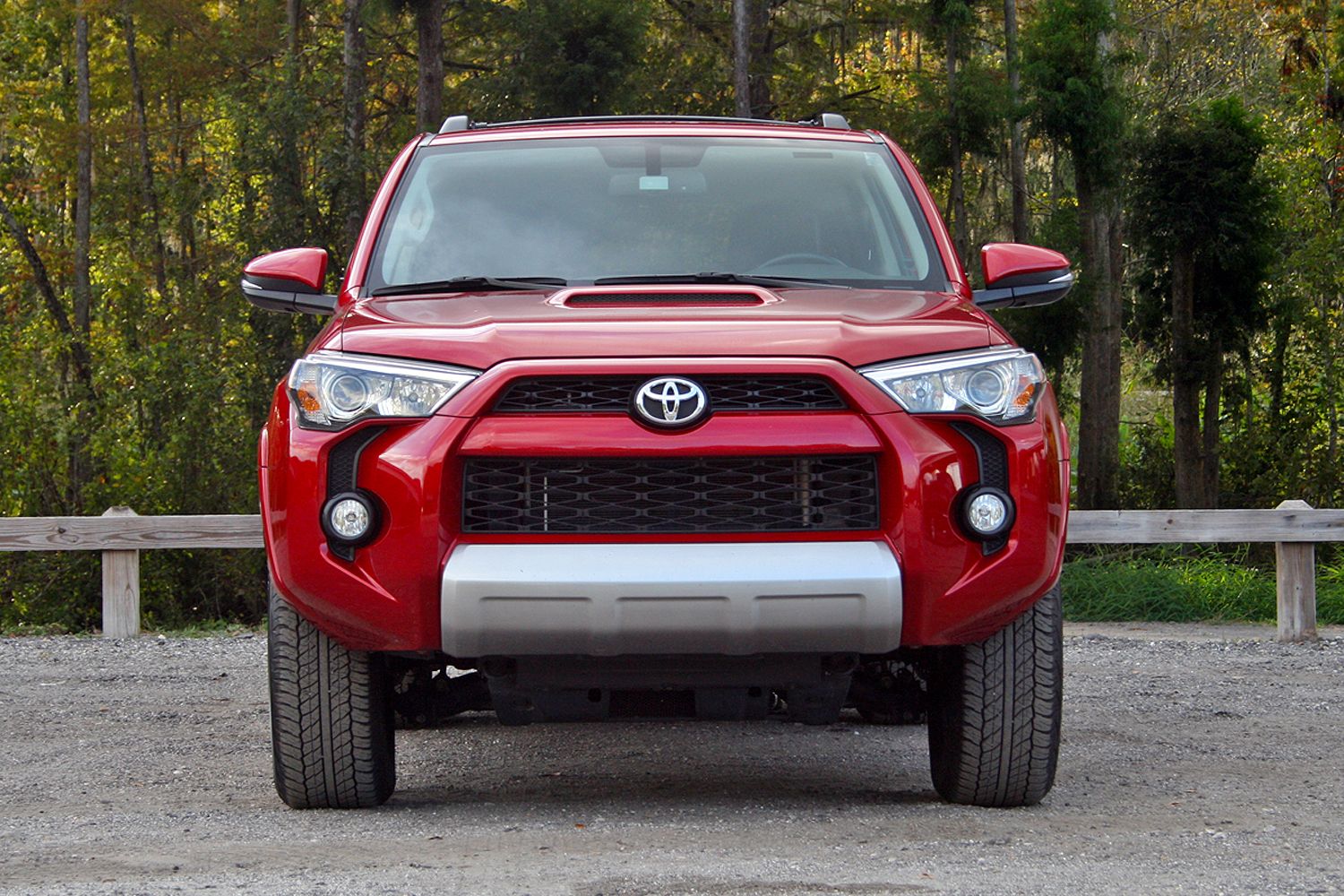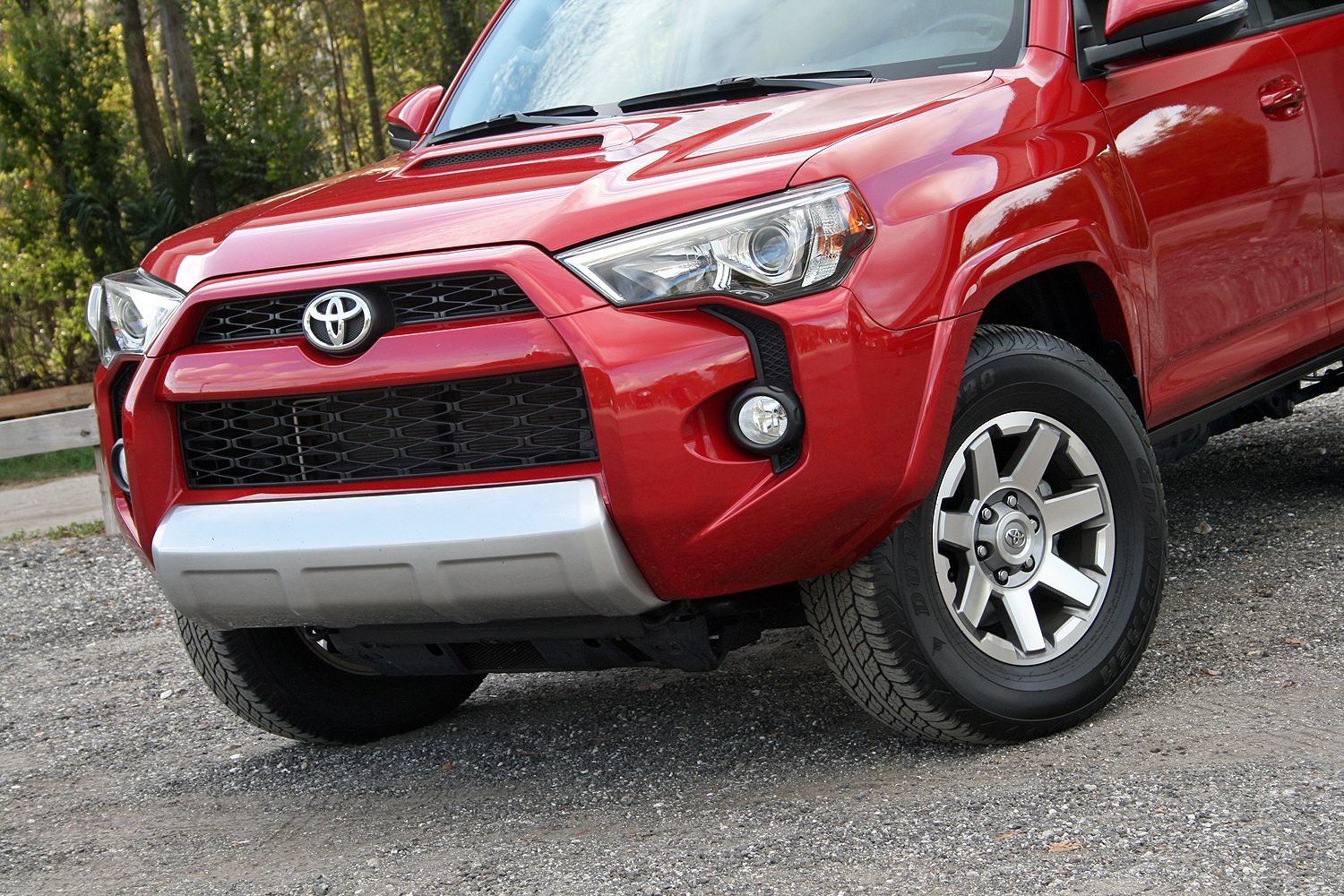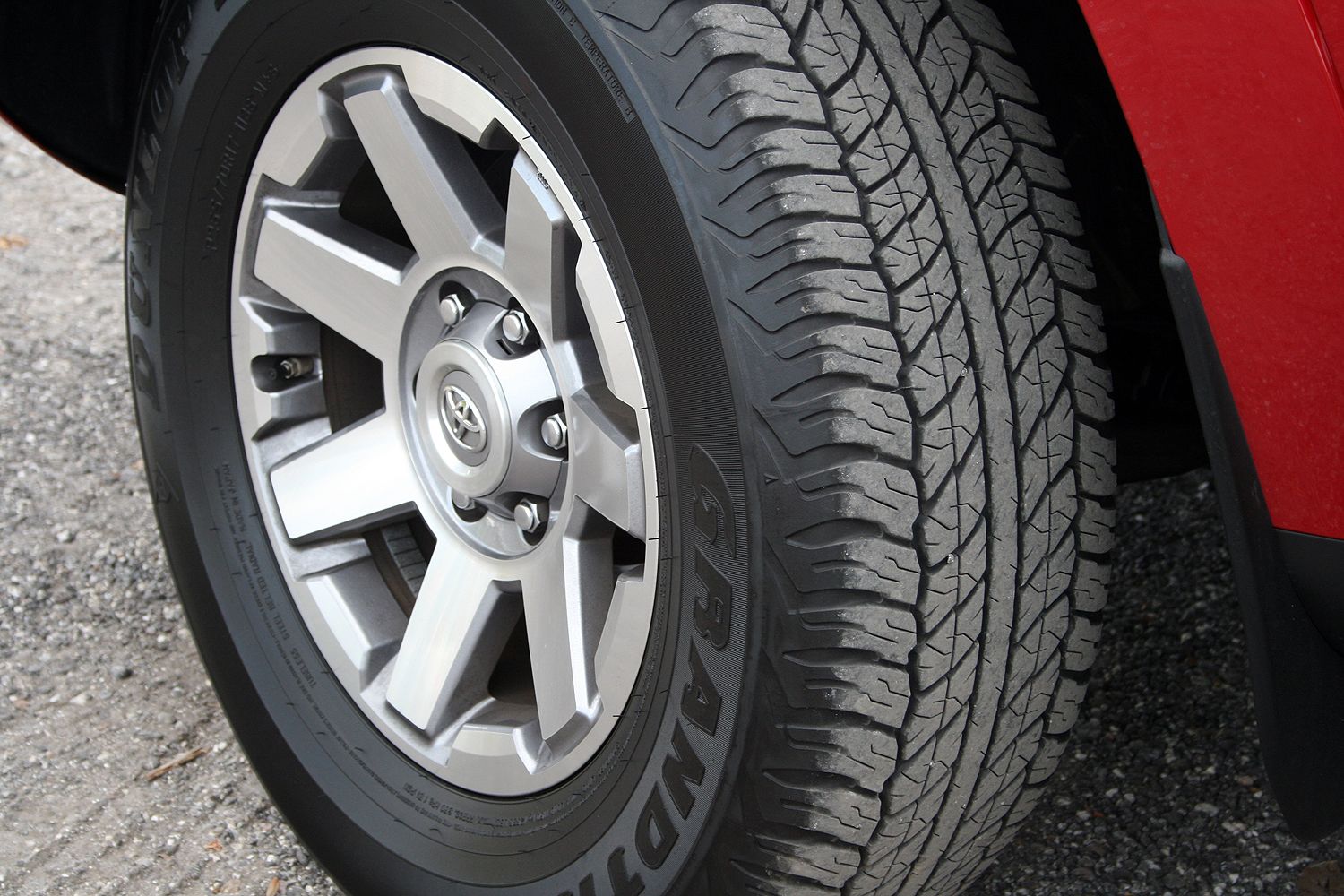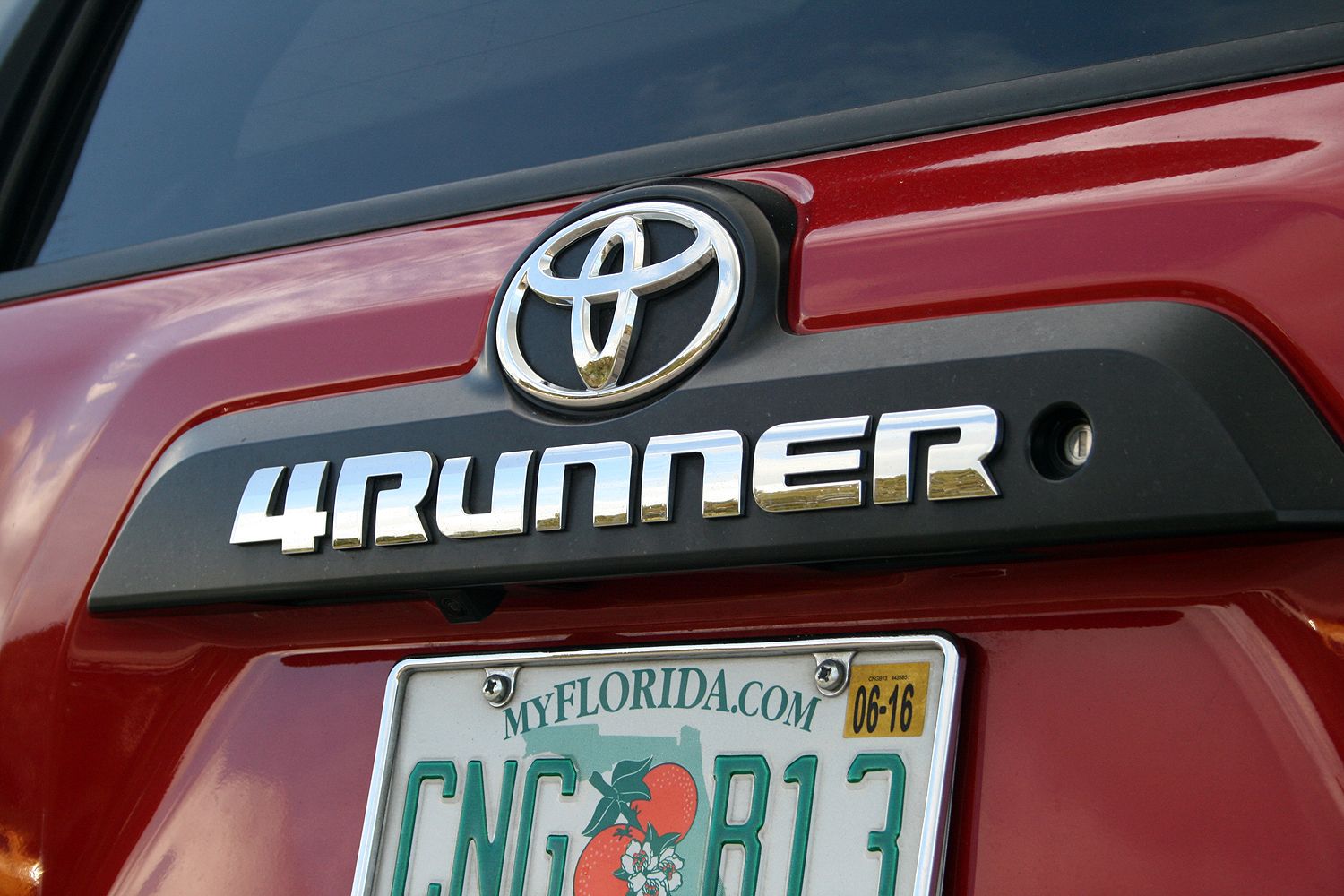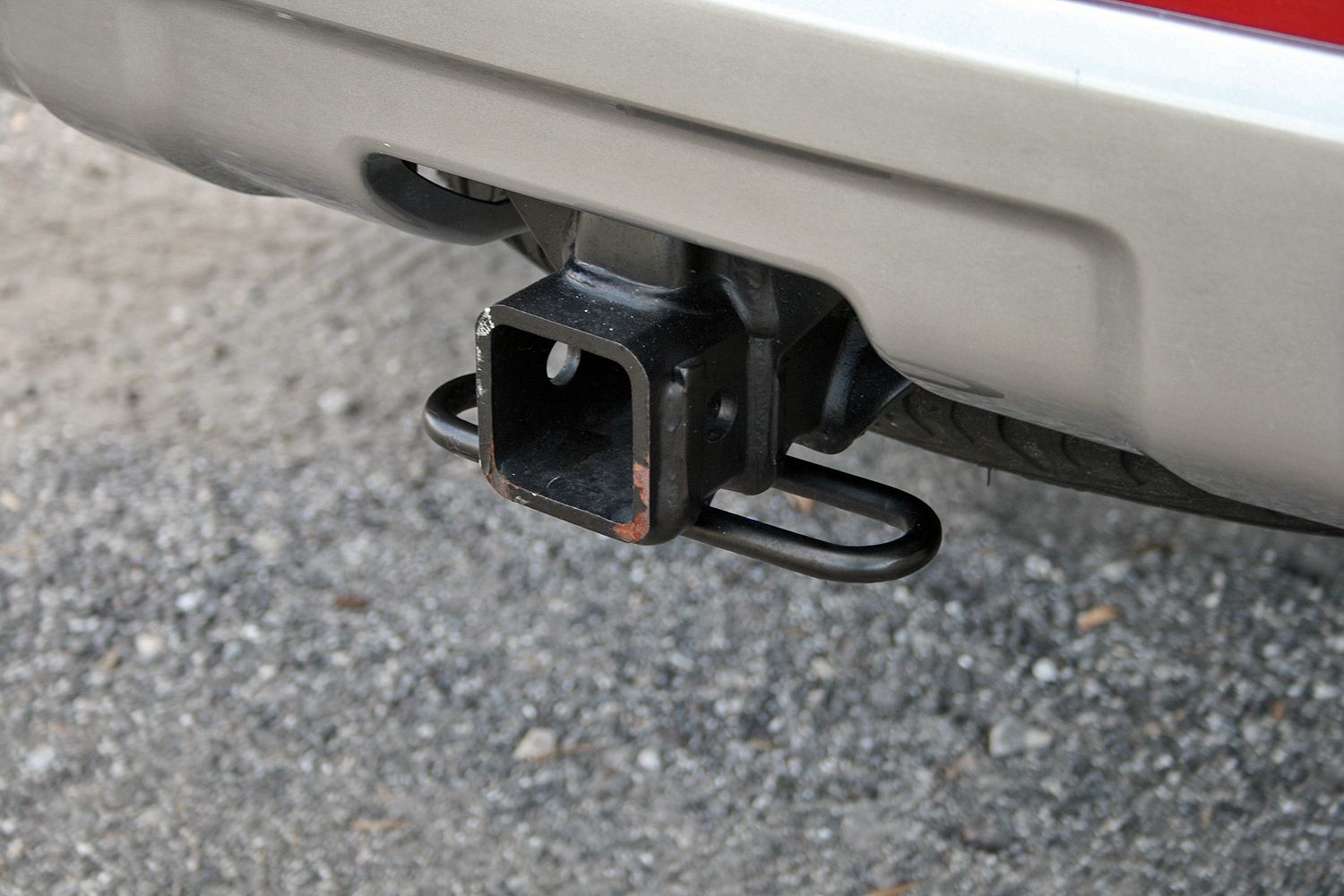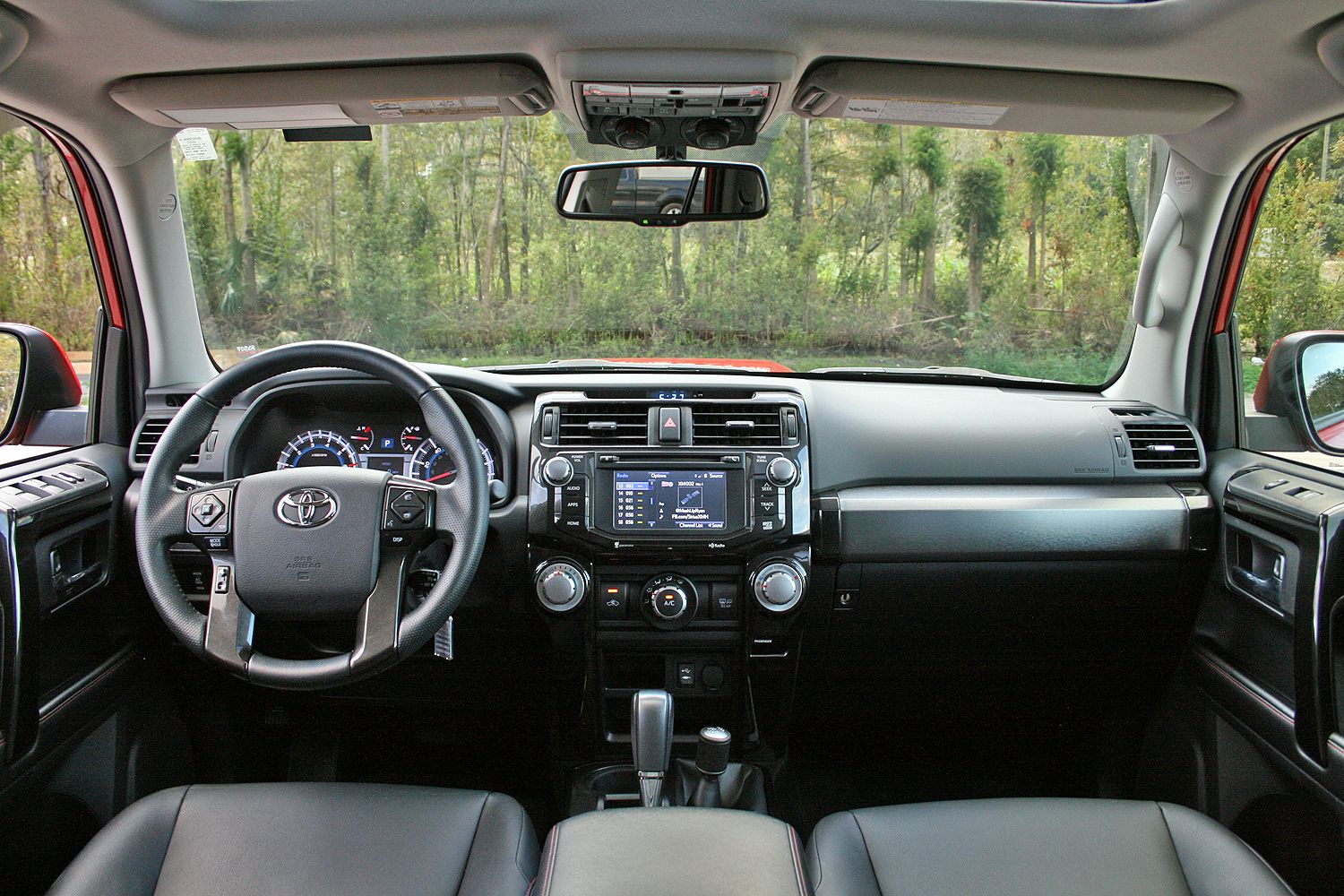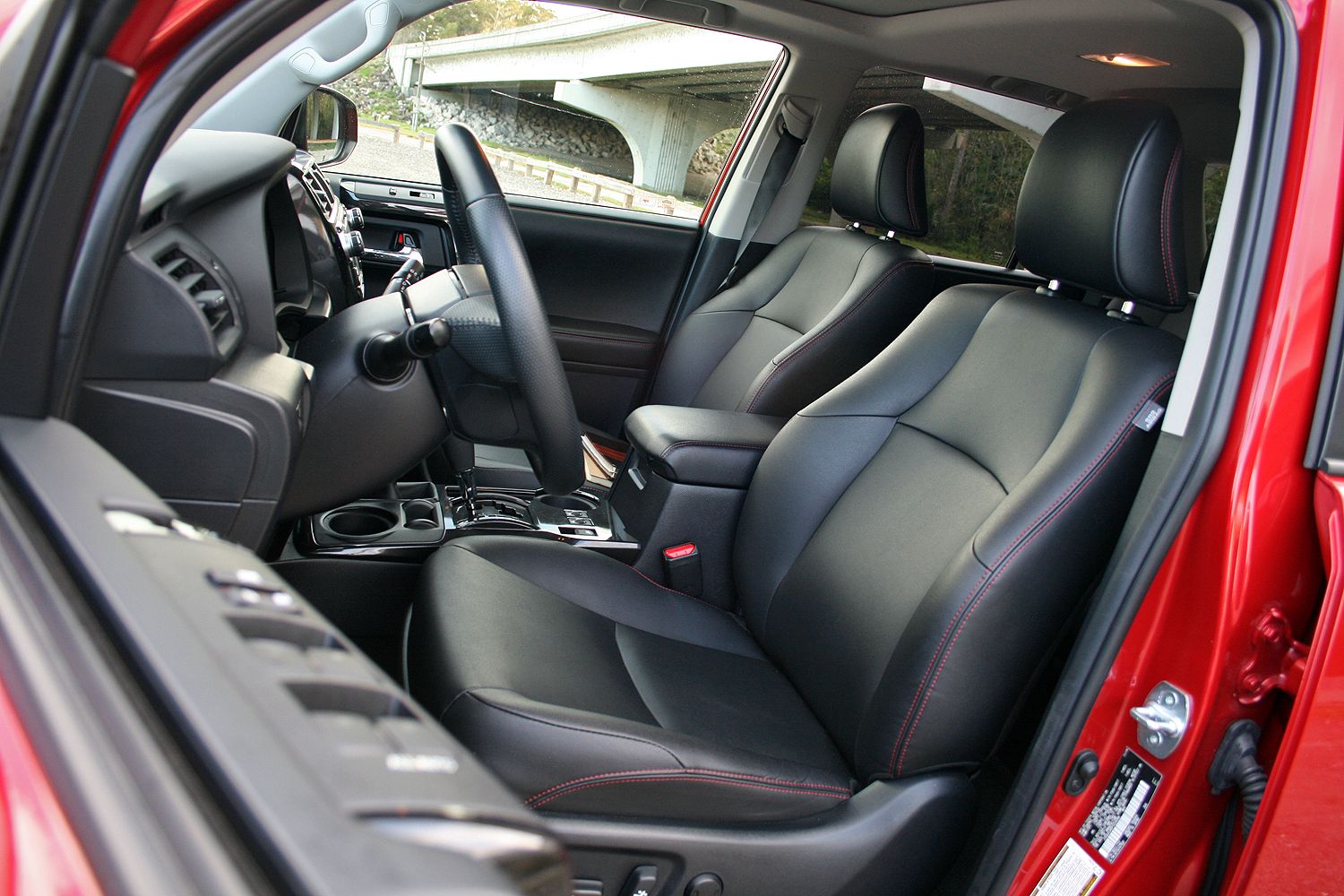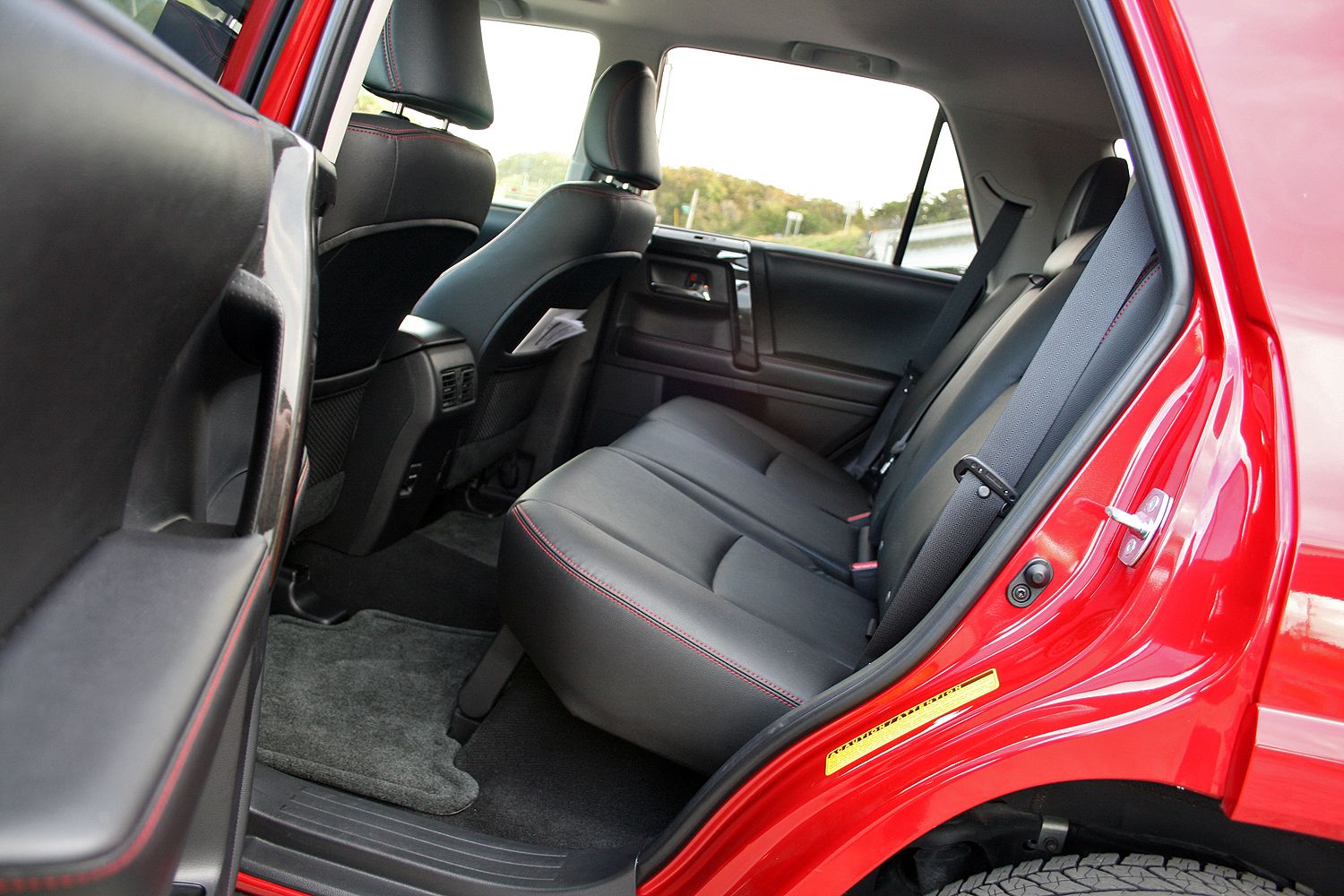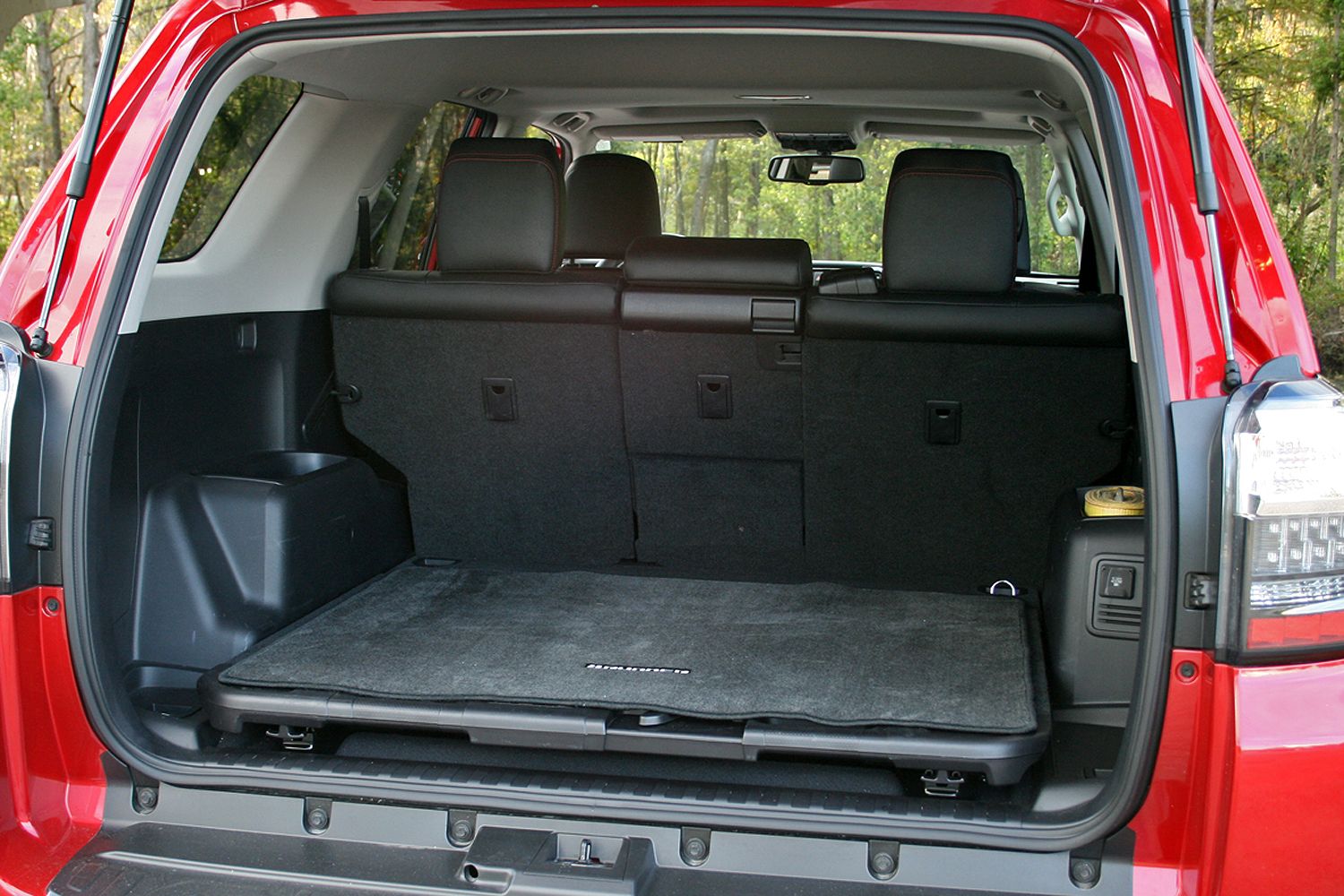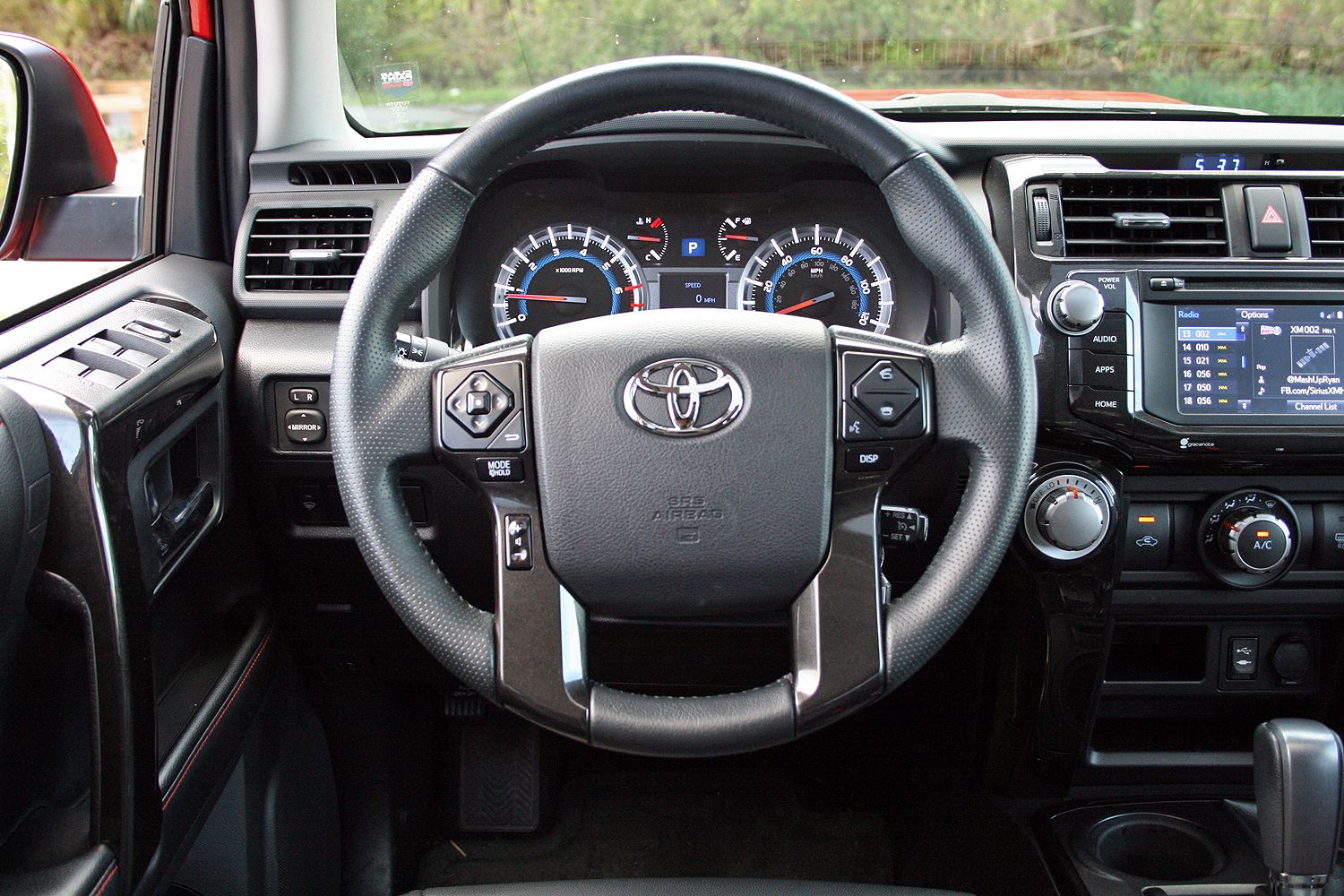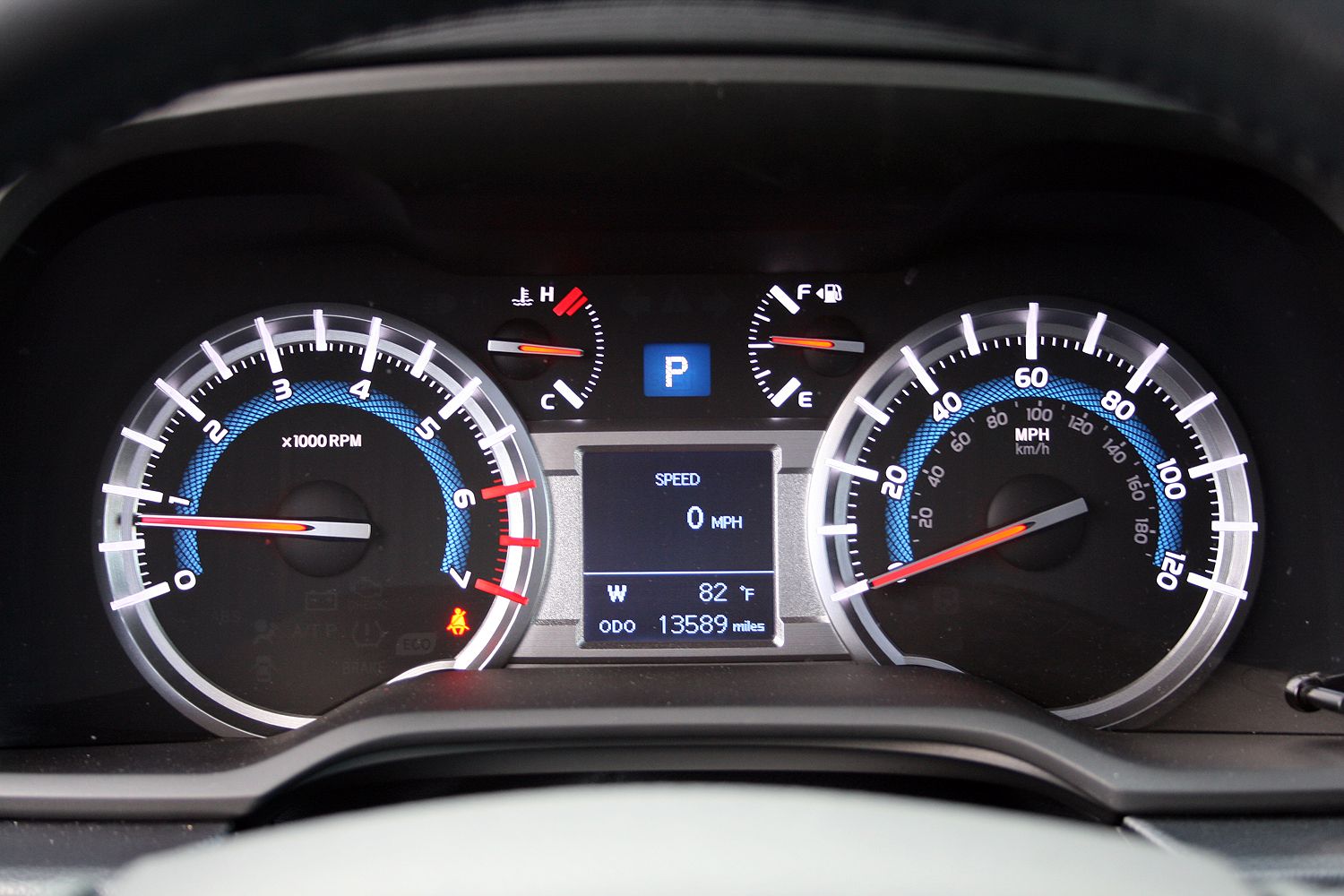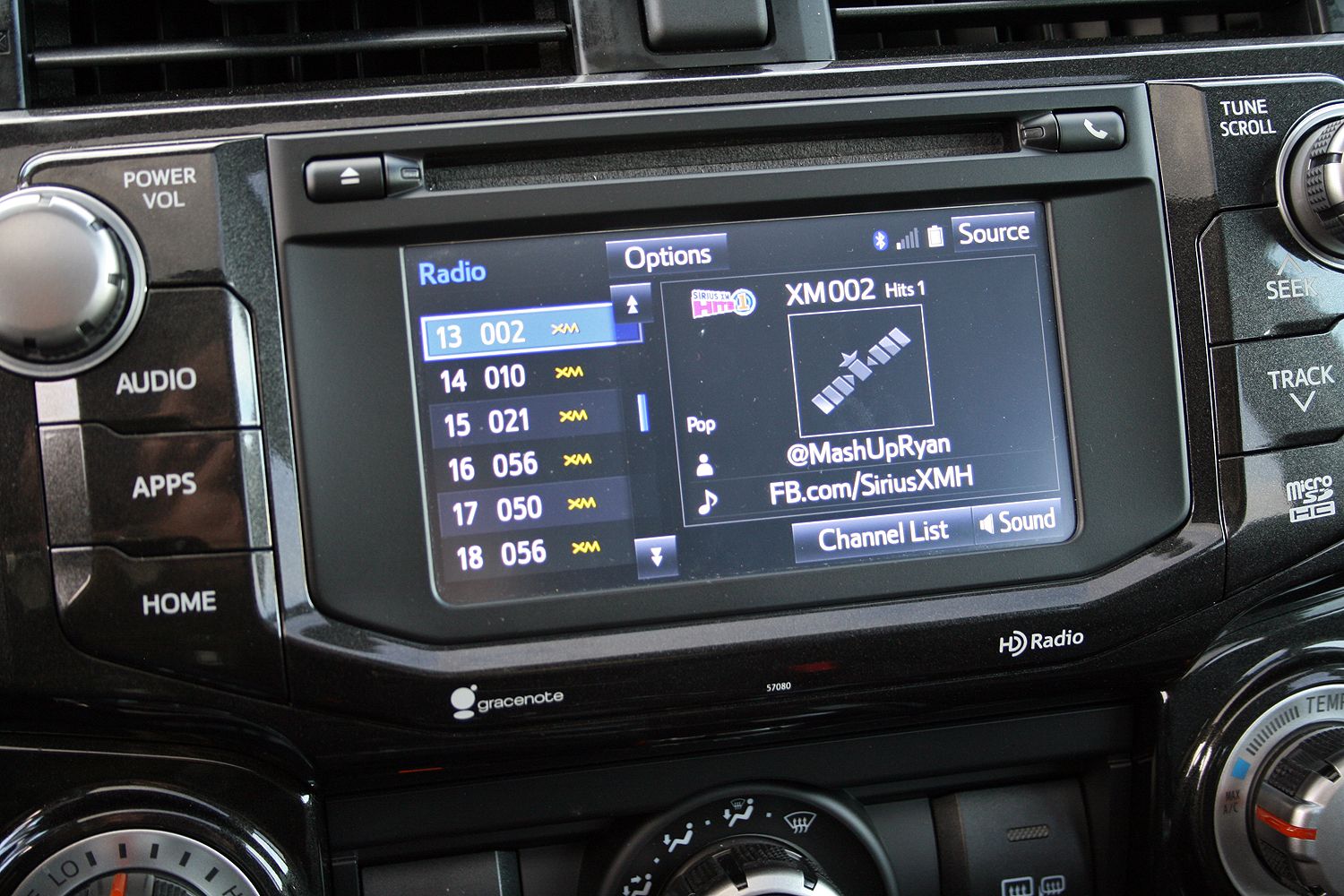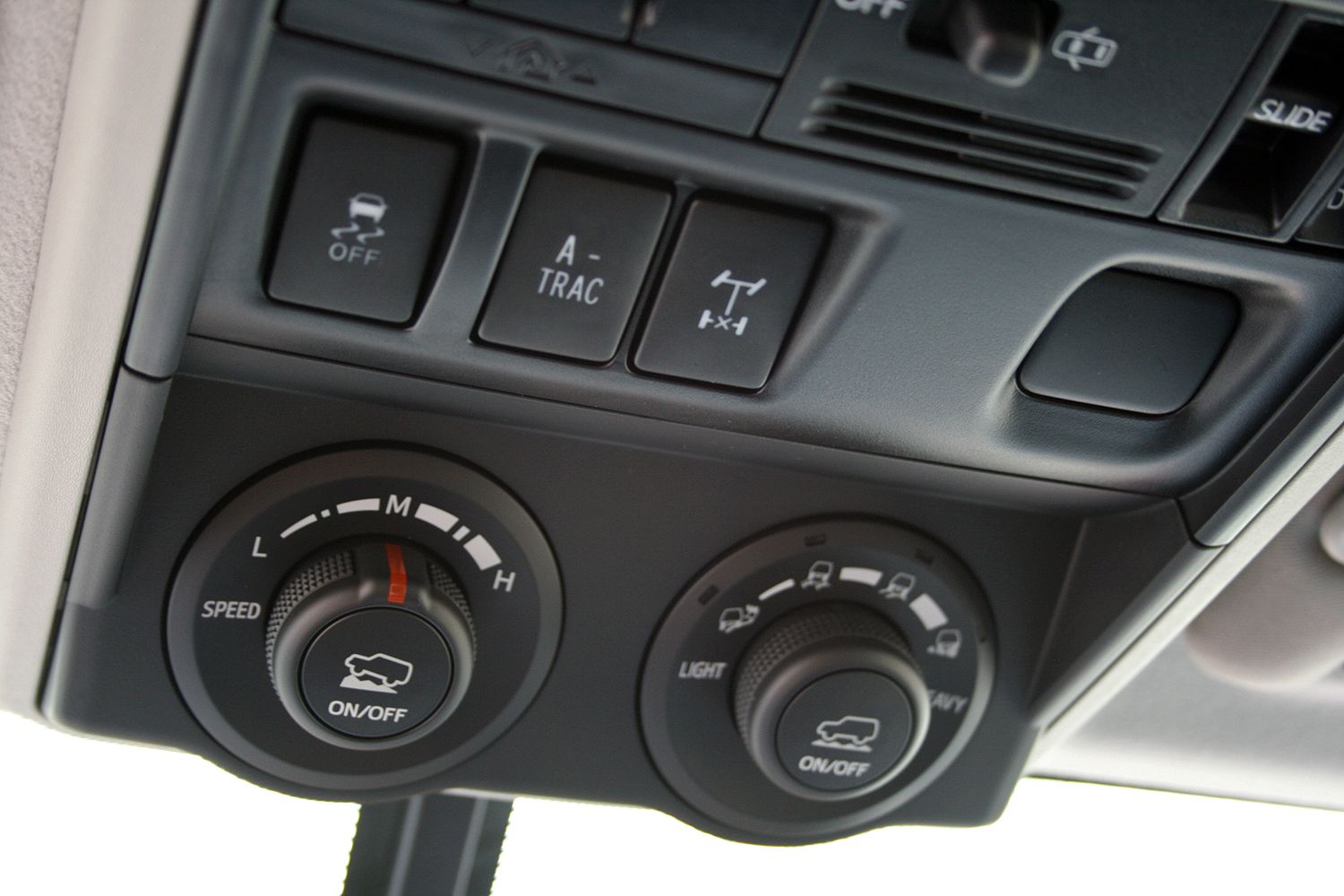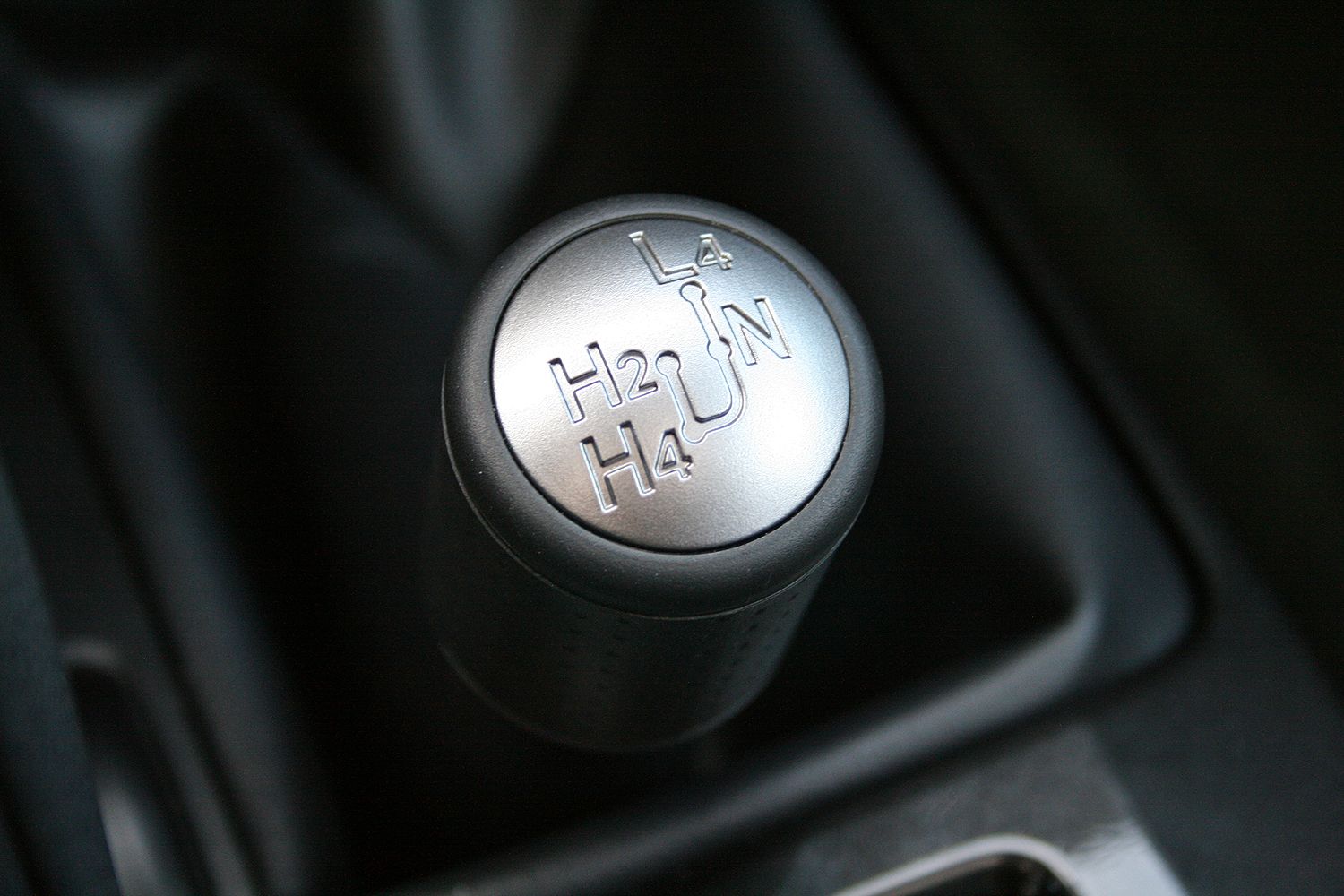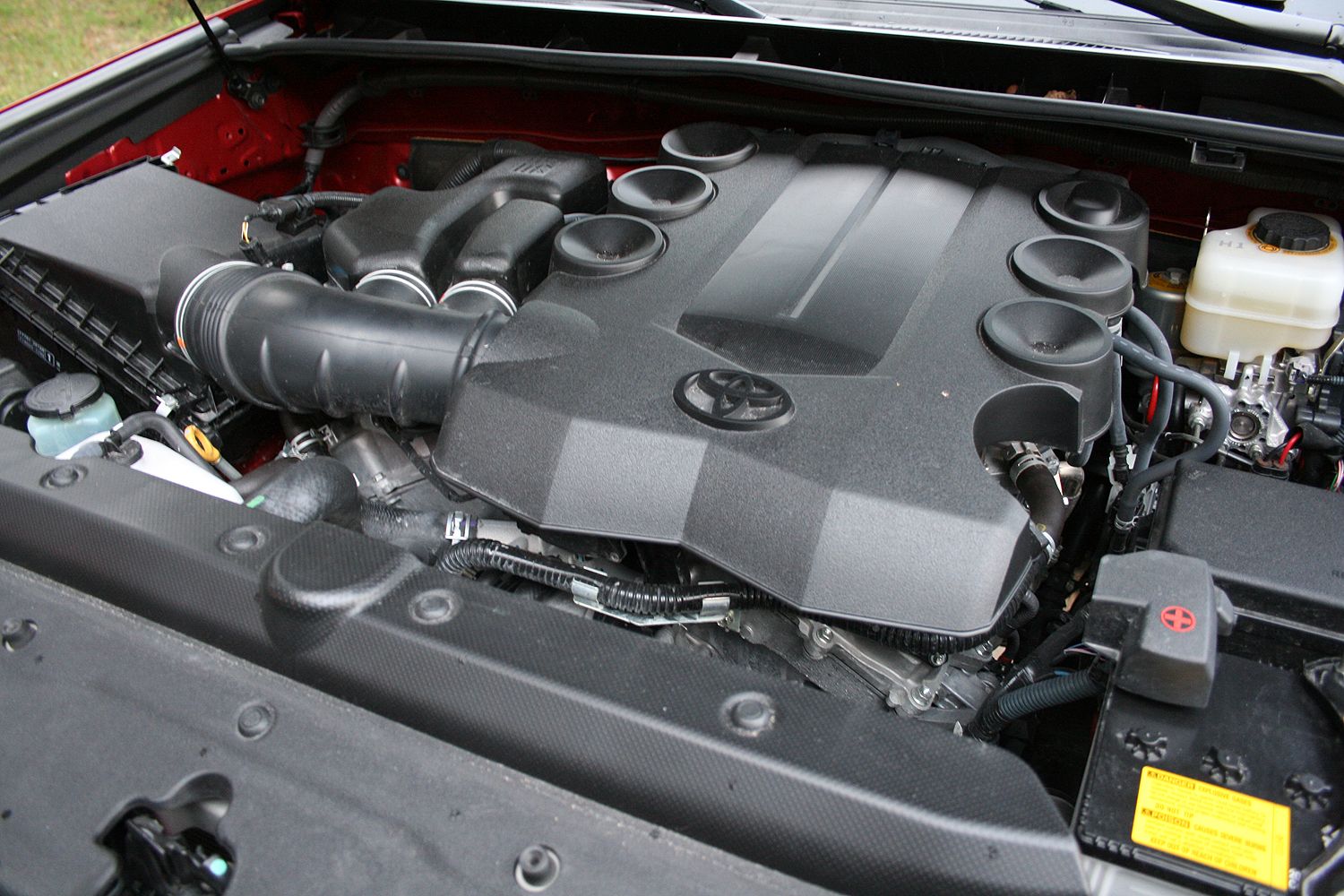They say honesty is the best policy, and in the world of SUVs,->ke145 it doesn’t get any more honest than this. The Toyota 4Runner has foregone the popular changeover to a unibody structure, keeping instead its old-school, body-on-frame design, solid rear axle, and manual transfer case (at least in the Trail and TRD Pro models).
The 4Runner->ke1844 has been around since the dawn of time – or at least Toyota’->ke88s influx into the U.S. back in the 1980s – and was derived off Toyota’s pickup truck->ke242 line, which is now the Tacoma.->ke1042 The 4Runner’s genealogy continues today, with it sharing much of the underpinnings and powertrain of the last-generation Tacoma.
Though the 4Runner is due for an update following the 2016 Tacoma, the 2015 model soldiers on unchanged since its last update in 2014. Still present is the old 4.0-liter V-6, and five-speed automatic transmission. The pair certainly isn’t known for its fuel economy, but the engine and transmission offer rock-solid operation and get-there-and-back reliability. No turbos, no fancy direct injection – just a no-nonsense powertrain.
The same is true for the rest of the SUV. Practicality and function win out over appearances and luxury. Sure, the 4Runner can be had with leather seats, navigation, an electronic transfer case, and other niceties, but that’s just a bandage on top of its ruggedness. As Taylor Swift says, “Band-Aids don’t fix bullet holes,” so neither do the luxuries take away from the 4Runner’s macho presence. That’s something sorely missed in today’s lineup of soft crossovers and road-biased SUVs.
So what’s it like to live with such an undomesticated beast? Well, it’s easier than you might think, but you’ll have to keep reading to find out.
Continue reading for the full driven review
2015 Toyota 4Runner - Driven
- Make: Array
- Model: 2015 Toyota 4Runner - Driven
- Engine/Motor: V6
- Horsepower: 270 @ 5600
- Torque: 278 @ 4400
- Transmission: Five-speed automatic
- [do not use] Vehicle Model: Array
Walk-Around Video
Exterior
Just look at it – that mug is mean. The open grille seems ready to eat children, cattle, and rocks; all with a sinister squint in its eyes. Its flanks are far above the ground like its loins are girded. An exposed trailer hitch, tow hooks, and frame rails all suggest the 4Runner is ready for work and hardcore play. There’s no doubt, this is not your grandma’s crossover.
Okay, true, the 4Runner’s looks aren’t all that old. The 2014 model year brought a mild refresh inside and out, helping give the 4Runner its more aggressive, less rounded appearance. In fact, compared to the previous generation (2002-2009), the modern 4Runner is downright squarish. It was 2010 when the current, fifth-generation 4Runner debuted, though its powertrain carried over; all except the 4.7-liter V-8.
The 2010 4Runner still had a large grille, but it was far more traditional, lacking the side vents under the headlights. Nevertheless, the 2015’s design still looks fresh.
Getting down to the dirty parts, my 4Runner Trail Edition came with frame-mounted tow hooks under the bumper, thick skid plates covering vital driveline components, and high-profile tires. I do wish the tow hooks were larger and more easily accessible, and that the OEM tires were a bit more aggressive. This is the Trail Edition, after all.
Perhaps one of my favorite features of the 4Runner is its rear power-window. Simply press a button on the center console, and the rear window drops into the tailgate for a more open-air driving experience. What’s more, it looks cool, too.
Interior
Speaking of the interior, the 2014 mid-cycle refresh brought an updated cabin. The dashboard, though similar, is upgraded with a new gauge cluster, a restyled passenger section, and glossy black plastic on the center stack and accent pieces. It looks more grown-up than the 2010-2013 dash, yet still retains a youthful and purposeful appearance.
Controls are placed in good locations, being easy to reach and operate. The infotainment system is simple to use. Its software is Toyota’s familiar Entune system. The HVAC controls couldn’t be simpler to operate. Three large knobs control the fan speed, temperature, and vent direction. Dual zone temperature control is missing here, but is present on the range-topping Limited model. At this price point though, dual zone would be nice.
Comfort wise, the 4Runner’s seats are pretty good. The front seats are supportive and offer plenty of adjustability. The second row offers slightly less long-range comfort, but reclining backrests, spacious legroom, a center armrest, and rear air vents make it more comfortable to more than just kids and teens.
The 4Runner’s traditional SUV roots shine through again with the cargo room. There is plenty of space behind the second row, and with the second row folded flat, the 4Runner offers cargo van-like carrying capabilities. My tester also came with a roll-out cargo tray. A quick-release lever allows the tray to move rearward, maybe eight to 10 inches, making tailgating more fun. It does cut vertical storage height by roughly six inches, however. Tailgaters will be happy to see a 12-volt and 110-volt power plugs in the cargo hold.
Drivetrain
Despite the cosmetic changes in 2014, the 4Runner soldiers on with the same, venerable yet aging, 4.0-liter V-6. But we’re talking about honesty here, remember? And as far as modern engines go, the 4Runner’s V-6 does the job with no hubbub or fuss. Its most modern features are its dual overhead cams, each with variable valve timing. The resulting output is 270 horsepower and 278 pound-feet of torque. Not bad, considering its likely successor, the 3.5-liter V-6 found in the 2016 Tacoma has dual combustion cycles, direct and port fuel injection, and variable valve timing, yet only generates 42 horsepower more. Torque is down by 13 pound-feet over the 4.0-liter. Then again, Toyota is aiming to improve fuel economy with the new 3.5-liter.
All that aside, the 4.0-liter V-6 works well. It does feel a bit course and is somewhat pokey in the lower rpm range, but picks up and moves when under full throttle. It’s plenty powerful for the high-centered 4Runner.
Mated to the V-6 is another aging bit of hardware – Toyota’s five-speed automatic transmission. Here again, don’t mistake old for bad. The five-speed is simply short a gear compared to the newer transmissions out there. it shifts smoothly, is quiet, and has a relatively decent response time to manual shift inputs.
But perhaps the best part of the 4Runner’s drivetrain is its transfer case. The manually operated gearbox sends power to the front axle when extra traction is needed. The only key – you do the shifting yourself. No whiz-bang automatic mode or full-time engagement here. The driver must purposefully want to be in 4WD. Operation is nevertheless simple; just pull back on the shifter for 4WD high-range. This can be done at almost any speed. For extra torque during low-speed maneuvers, low-range is selectable by moving the transmission shifter into neutral and pushing the transfer case shifter to the passenger side, then forward. Return the transmission shifter to drive, and you’re ready to go.
The 4Runner Trail Edition also comes with an electronic locking rear differential. The transfer case must be in low-range, but a simple button on the headliner locks the rear wheels together, maximizing the available traction.
During my week with the 4Runner, I averaged 17.5 mpg combined. That’s right around the EPA’s estimate of 18 mpg combined. The EPA also estimates the 4Runner will get 17 mpg city and 21 mpg highway.
Driving Impressions
The 4Runner’s ladder frame, solid rear axle, tall ride, and skinny tires leads to a very different ride than the average crossover found in the local mall parking lot. Fast cornering isn’t advisable and body motions are pronounced. Pound the brake pedal, and the 4Runner nosedives. Burying the accelerator returns a similar result with the rear taking a squat. But you know what? Never once did I care.
The 4Runner is a different beast that must be driven with respect. Folks who grew up driving Jeep, Suburbans, Broncos, or Ramchargers know that on-road civility is traded for off-road capability. Knowing that you could conquer that muddy interstate median should the need arise completely nullifies any body motions felt at speed. That’s a special feeling most new SUVs and crossovers don’t give you.
Kidding aside, the 4Runner Trail Edition does have an optional suspension component that helps minimize unwanted rocking, while keeping the suspension free enough for articulating over rocks. It’s call KDSS, or the Kinetic Dynamic Suspension system. It works by connecting the each side of both front and rear sway bars together via hydraulic hoses and reservoirs. This self-activating system keeps the suspension stiffer during high-speed driving and more compliant at lower speeds. The system costs an extra $1,750, but is well worth the investment.
Yet another bit of technology that helps the 4Runner Trail Edition is Toyota’s Multi-Terrain Select system. It’s similar to other terrain management systems found elsewhere in the market, but Toyota’s system takes things one step further. A rotary dial above the rearview mirror holds positions for mud and sand, loose rock, mogul, and rock. Once in low-range, the system will further act like a low-speed cruise control. Simply turn the dial to adjust the speed and the computer will modulate the brakes and gas to crawl the 4Runner over obstacles. From my experience, the system works best on rocks, where a slow but steady progress is needed and where the steering requires a lot of attention.
Jeep Wrangler Unlimited
Despite the 4Runner’s old-school design, Toyota is still asking a pretty penny for the SUV. The base price for a 2015 4Runner starts at $33,210. Opting for the Trail Edition further ups the price to $38,665. And then there’s the options.
My tester came with several, including the sliding rear cargo deck ($350), KDSS suspension system ($1,750), roof rack cross bars ($185), paint protection film ($395), remote engine start ($499), and four season floor mats ($325). Toyota is offering a 30th anniversary discount for the 2015 model year of $750. Still, adding on the $885 destination charge pushes the price to $42,294.
Read our full review on the Jeep Wrangler Unlimited here.0
Ford Explorer
Okay, so the Jeep Wrangler isn’t exactly an absolute apples-to-apples competitor to the 4Runner, but there isn’t much that is. The Jeep certainly competes with the 4Runner’s more rugged side. Like it has since the 1940s, the Jeep comes with a ladder frame, 4WD, and solid axles. The modern Wrangler JK comes powered by FCA’s 3.6-liter Pentastar V-6 that kicks out 285 horsepower and 260 pound-feet of torque. Similar to the 4Runner, a five-speed automatic does the shifting, though a six-speed manual comes standard.
For those who don’t have a family to haul around, the standard, two-door Wrangler might be a better choice. Prices start at $24,000 for the Wrangler and $28,000 for the Wrangler Unlimited.
Read our full review on the Ford Explorer here.
Ford Explorer
Taking this comparison in a completely different direction is the Ford Explorer. The big-bodied Ford has moved from its body-on-frame heritage to a unibody design in recent years, all in the name of comfort and fuel economy. There’s nothing wrong with that, I guess, but the Explorer is no longer the rough and tumble SUV it used to be. Nevertheless, the Explorer still offers a competent 4WD system and the ability to tow 5,000 pounds. More to the point, the Explorer offers high levels of luxury, while still offering more SUV-like capabilities than a Taurus or Fusion.
Along with its more modern design, the Explorer comes with three engine options. The base engine is the naturally aspirated, 3.5-liter V-6 while the middle ground is served by a 2.3-liter EcoBoost four-cylinder. Range-topping models get the 3.5-liter EcoBoost V-6.
Prices are competitive with the bunch, starting at $31,000 for the base Explorer. Prices then grow to the mid-$50,000 range for the top-dog Platinum model.
Read our full review on the Ford Explorer here.
Conclusion
The 4Runner is simply a solid SUV that has managed to skip the popular unibody transformation sweeping the American automotive market. It’s hard to say if Toyota will continue bucking that trend with the 4Runner, but for now, the SUV remains true to its humble roots.
Honesty really is the best policy, and in terms of being a good SUV, the 4Runner knocks it out of the park. There’s plenty of room inside; bold, exciting looks outside; a rugged demeanor; and enough horsepower to move it all down the road. The 4Runner isn’t about luxury or having the best on-road feel, but rather combining the hard-core elements of a traditional SUV and merging them with the technology of today. Both aspects shine through from behind the wheel. The 4Runner is honest in the fact it doesn’t promise something and deliver another. I suspect most buyers know exactly what they’re signing up for.

